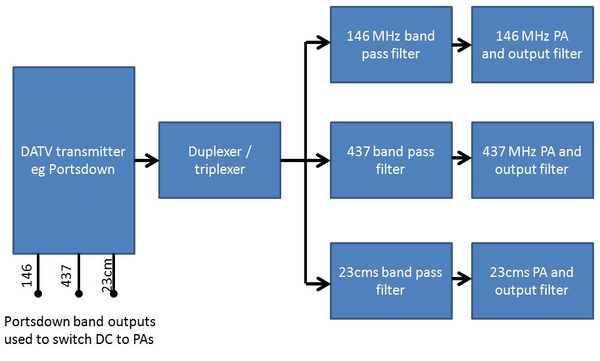Filters
It is absolutely essential that filters are used on the output of the Portsdown and any other wide band DATV transmitter such as DTX1 and DATVexpress to remove harmonics of the wanted signal. Just try tuning your receiver to 439.5 when transmitting on 146.5 MHz!
The same also applies to the input of any ATV or DATV receiver which uses a wide band satellite tuner in the front end (all of them) - this is because these tuners were designed to be used in a "closed system" and connected directly to an LNB on a dish pointing at the clear sky. This is very different to being connected to a "wide band" yagi antennae which will also pick up PMR and paging systems, short range devices and broadcast transmitters many of which are digital and just produce white noise so you cannot tell you are being overloaded by them!
Reasonable filters are actually quite easy to build - a great place to start if you fancy that is W1GHZ paper on making filters from an Altoid's tin (any other metal tin will do) - http://www.w1ghz.org/filter/Altoids_Tin_Filters.pdf
If you want to design one from scratch Doug, both VK3UM, now sadly missed, has a calculator http://www.vk3um.com/interdigital%20filter.html or there's a lot of filter designs available for DIY build or to buy listed on these pages:
Using a duplexer filter on transmitter output to provide band switching
Rather than use a lossy expensive RF relay on the output of the DATV transmitter we can use a duplexer (for just 146 and 437 MHz operation) or a triplexer (for 146, 437 and 23cms operation) filter - as well as providing automatic band switching the duplexer (or triplexer) provides some bandpass filtering on the transmitter output!
The duplexr / triplexer can be a standard unit as we all use to run a dual band VHF / UHF rig in to a dual band antennae up one co-ax or they are very simple and cheap to build - links and circuits are available here.
Note - the band switching pins on the Rpi GPIO can then be used to switch DC volts to the right PA in use.
